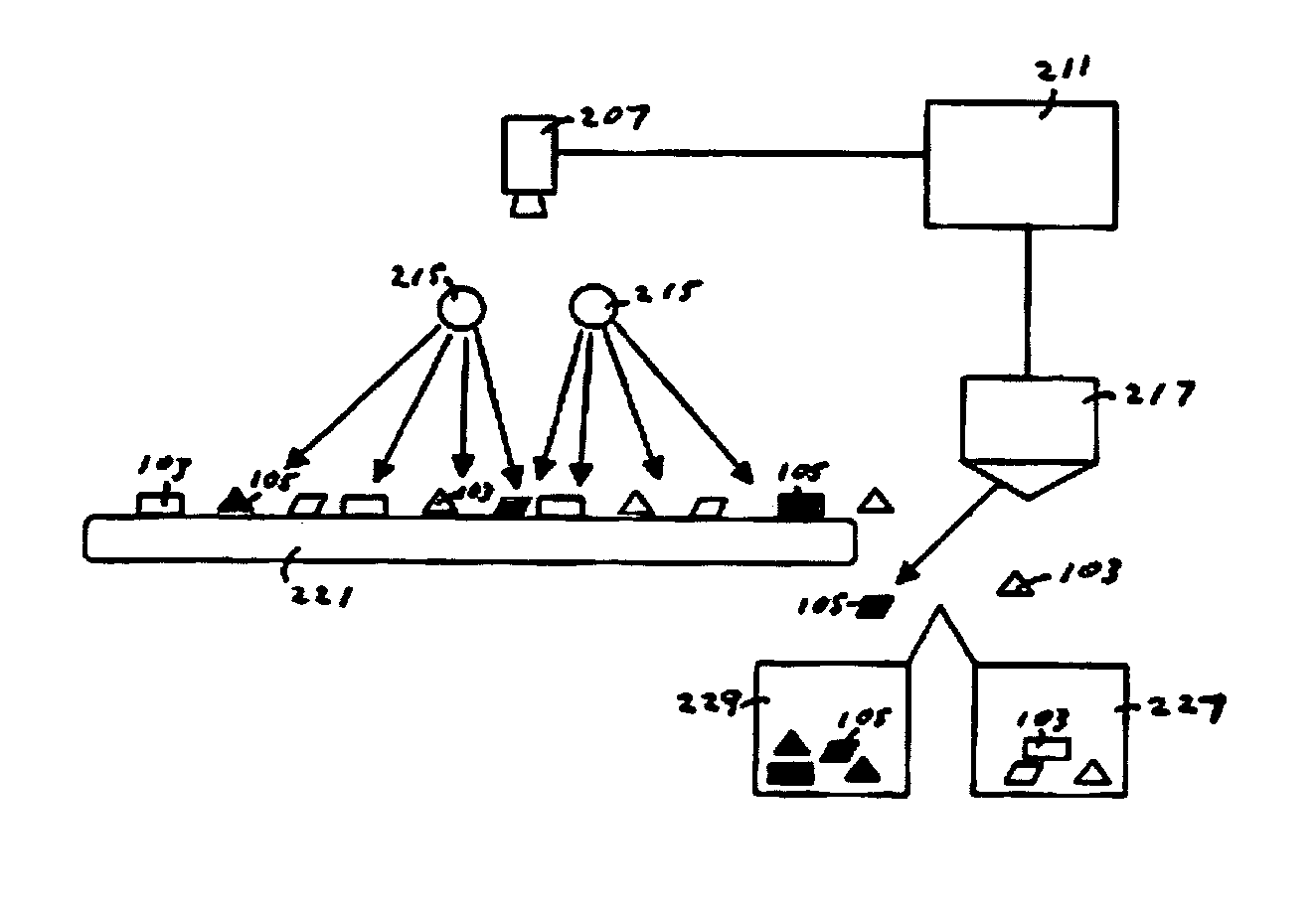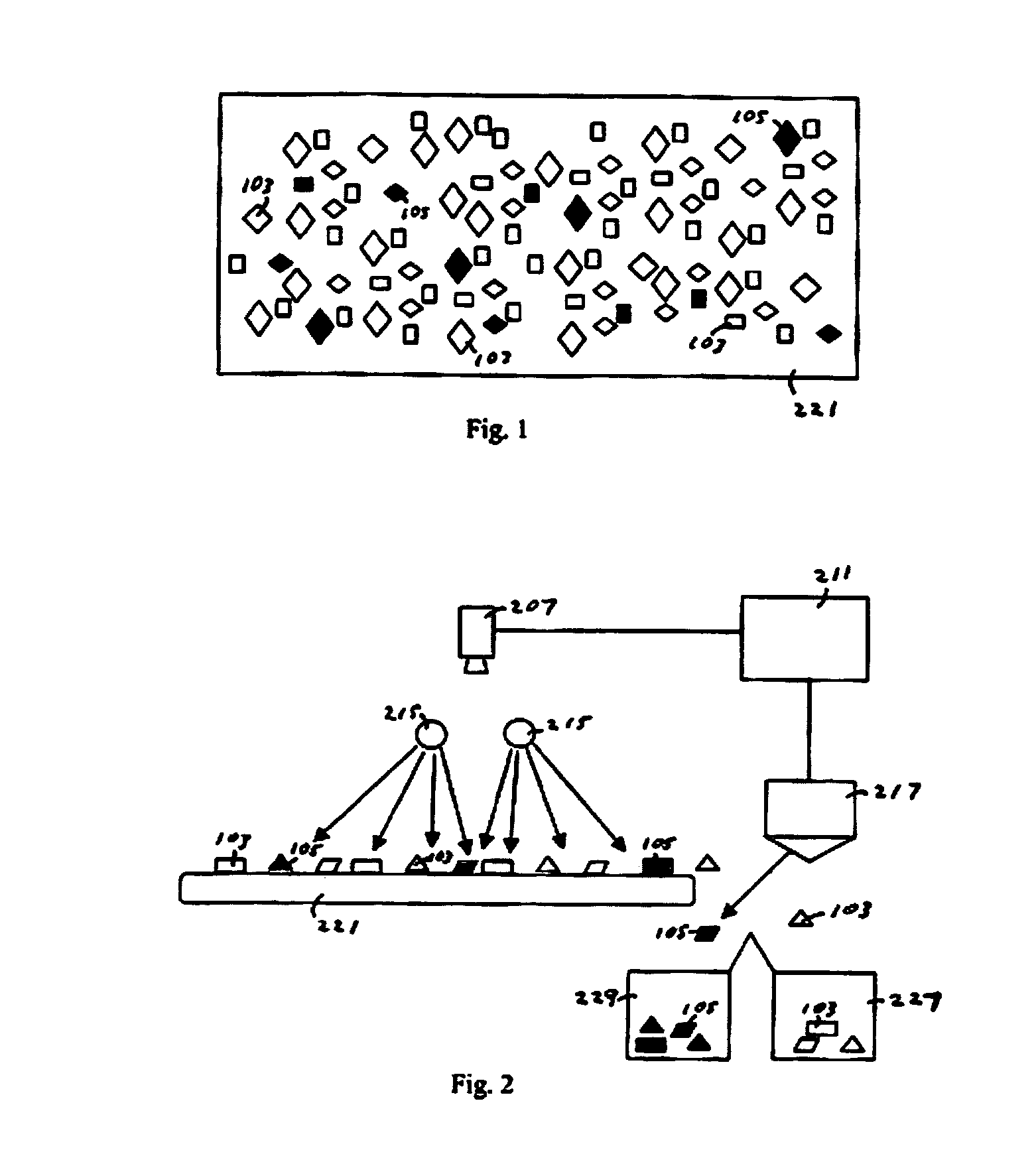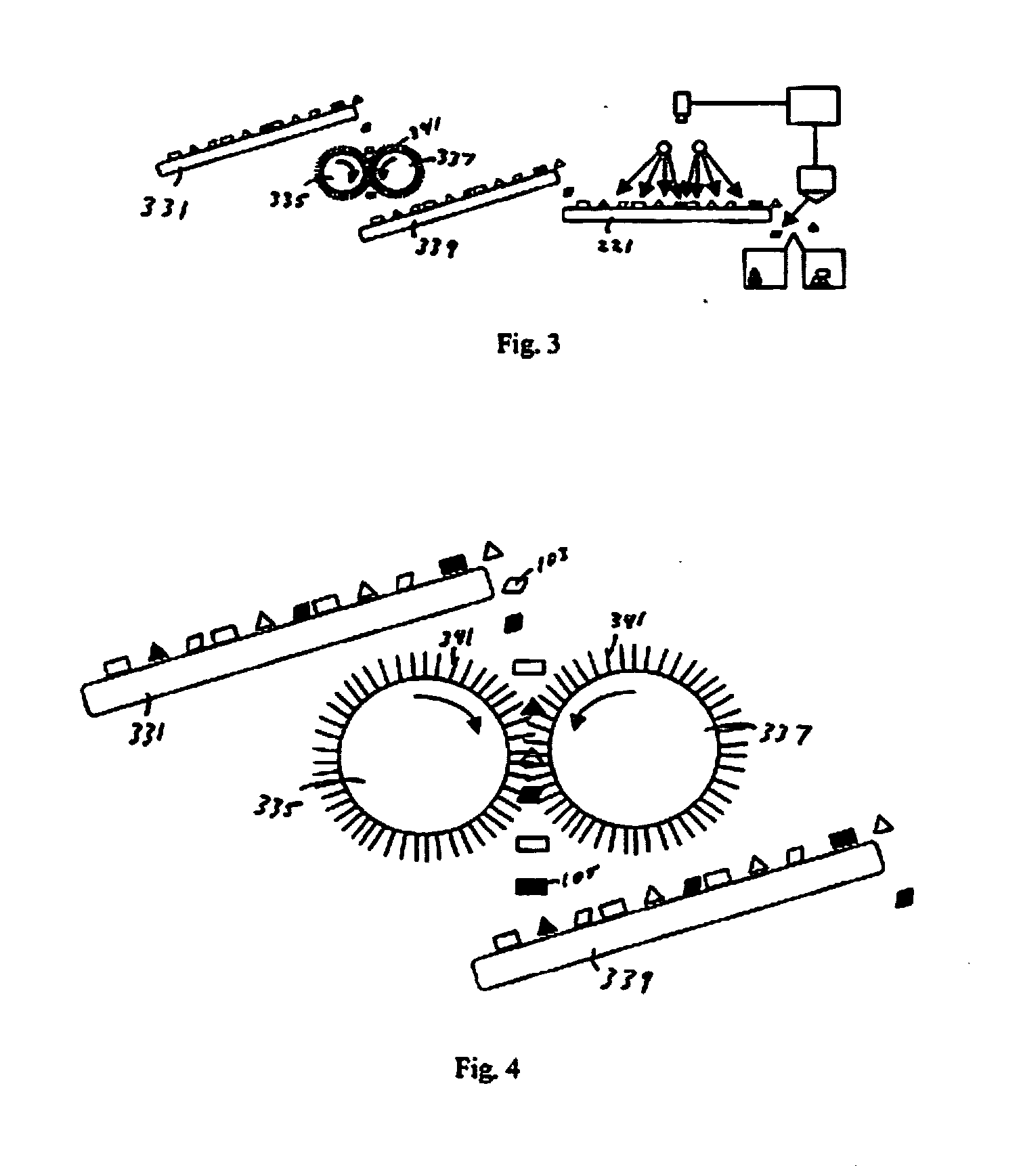Method and apparatus for sorting contaminated glass
a technology of contaminated glass and sorting apparatus, which is applied in the field of methods, techniques and apparatas for recycling waste materials, can solve the problems of slow and prohibitively costly for most purposes, potential exposure of landfills to high levels, and inability to detect high levels easily
- Summary
- Abstract
- Description
- Claims
- Application Information
AI Technical Summary
Benefits of technology
Problems solved by technology
Method used
Image
Examples
Embodiment Construction
[0017] With reference to FIG. 1, a carrier 221 is shown in top plan view, on top of which rest a plurality of glass pieces of at least two types, indicated by 103 and 105, waiting to be sorted. The carrier will be, in most cases, a conveyor belt or similar apparatus by which a continuous stream of glass pieces to be sorted is moved below a detection apparatus in accordance with the invention, as described hereinafter. However, for some implementations, the carrier can be implemented in other forms, such as a table, and therefore the carrier is not to be limited to a conveyor belt.
[0018] The glass pieces 103 and 105 typically differ from one another in that at least one of the types of glass pieces contain materials that are cause them to be considered contaminated, or at least different in some material way from the other types of glass pieces resting on the carrier. While only two types of glass pieces are shown in FIG. 1, for the sake of simplicity, it will be appreciated that th...
PUM
 Login to View More
Login to View More Abstract
Description
Claims
Application Information
 Login to View More
Login to View More - R&D
- Intellectual Property
- Life Sciences
- Materials
- Tech Scout
- Unparalleled Data Quality
- Higher Quality Content
- 60% Fewer Hallucinations
Browse by: Latest US Patents, China's latest patents, Technical Efficacy Thesaurus, Application Domain, Technology Topic, Popular Technical Reports.
© 2025 PatSnap. All rights reserved.Legal|Privacy policy|Modern Slavery Act Transparency Statement|Sitemap|About US| Contact US: help@patsnap.com



